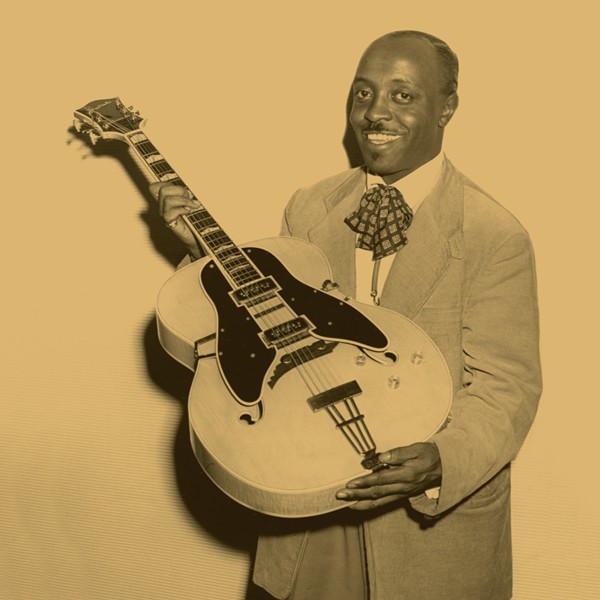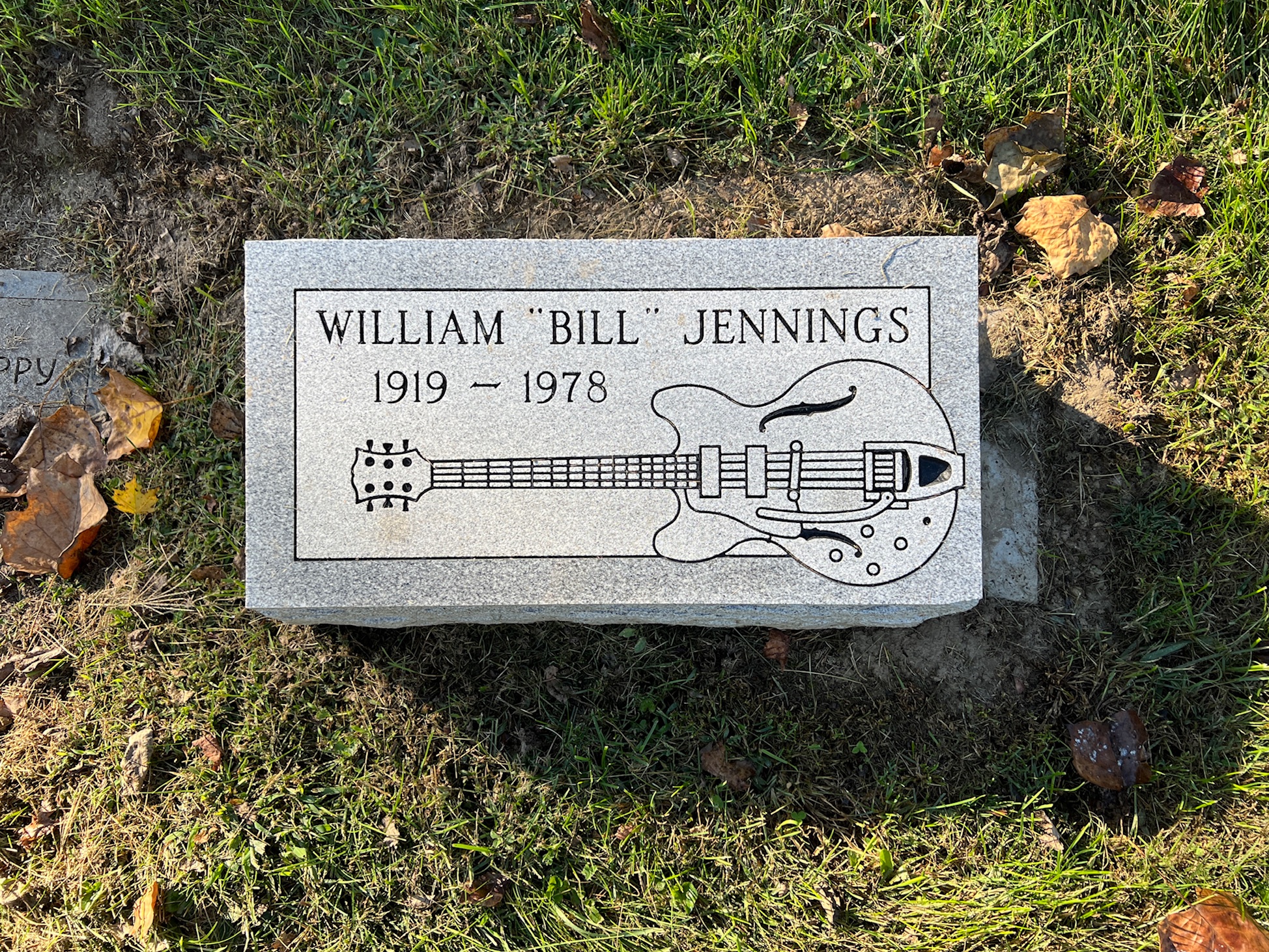Bill Jennings (1919 – 1978)

Because he was such a prolific sideman in the early years of the electric guitar on jazz, blues, early rock ‘n’ roll, and R&B, Bill Jennings is surely one of the most influential guitarists that only a few have heard of. Called “the architect of soul jazz,” and “one of my biggest influences” by B.B. King, he was left-handed and played the guitar upside down without reversing the strings, giving him a style all his own.
Jennings was born in Indianapolis in 1919. Hanging out on Indiana Avenue, he started playing professionally as a teenager and in 1937, he and his brother Al joined with former Ink Spot member Jerry Daniels (who is buried in Crown Hill Cemetery) to form a group called The Three Spades.
After serving in the Navy during World War II, Jennings made his first recordings in 1946, performing with jazz violinist Stuff Smith. In 1949, he joined Louis Jordan and the Tympani Five and appeared on a 1950 recording the band made with Ella Fitzgerald. He also appeared with Louis Armstrong.
In the mid-1950s, he played electric guitar on many early rock ‘n’ roll recordings with various vocalists, sometimes singing himself. His recording of “Fever” with Little Willie John went to Number 24 on the Billboard Hot 100. In 1958, he recorded an album with Etta James. Prestige Records put out two albums with Jennings on guitar, his brother Al on vibes, and “Brother” Jack McDuff on organ in 1959 and 1960. Many of his recordings can be found on YouTube.
As a sideman, he appeared on 10 Prestige albums led by saxophonist Willis “Gator” Jackson from 1959 to 1968. He returned to Indianapolis in the early 1960s and for a while continued to play in night clubs with the Buddy Parker Four. This group included Erroll Grandy, whom we featured in our January 2025 newsletter.
When Jennings died in 1978, he was buried in an unmarked grave. But the story doesn’t end there. In 2023, a national organization dedicated to providing headstones for musicians such as Jennings, the Killer Blues Headstone Project, placed a monument at his grave, making it easier to come out and pay your respects to this important musician.


